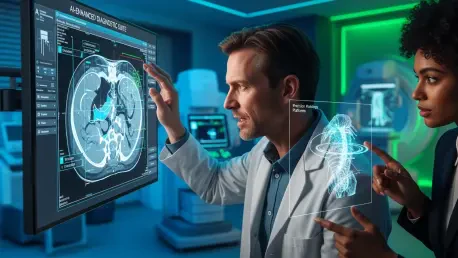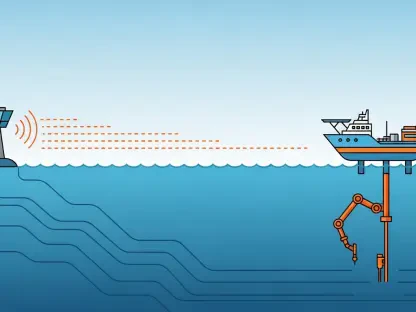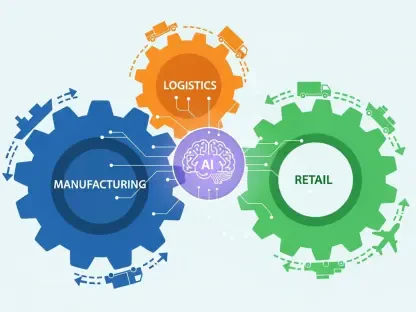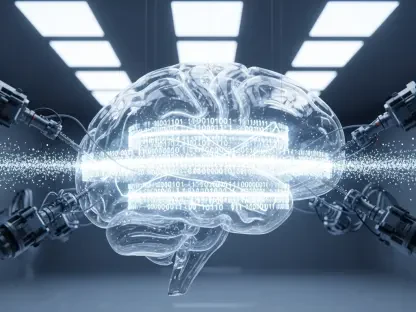In an era where medical imaging data is growing at an unprecedented rate, the field of radiology stands at a critical juncture, demanding innovative solutions to maintain diagnostic accuracy under immense pressure. Every day, radiologists are tasked with interpreting thousands of scans, a workload that can strain even the most experienced professionals and risk compromising patient care. The integration of artificial intelligence (AI) and deliberate practice emerges as a transformative approach, offering a pathway to shift from overwhelming volume to meaningful value. AI’s ability to process vast datasets with remarkable speed and precision, combined with structured training methods, promises to enhance diagnostic capabilities significantly. This powerful synergy not only alleviates the burden of data overload but also redefines how radiologists hone their skills for better outcomes. As healthcare continues to evolve, exploring how these tools can revolutionize radiology is essential for improving efficiency and ensuring that patient well-being remains the top priority.
Harnessing AI for Diagnostic Efficiency
The sheer volume of imaging studies in modern healthcare creates a daunting challenge for radiologists, often leading to fatigue and potential errors in diagnosis. AI steps in as a vital tool, equipped with algorithms that can analyze massive datasets at a pace and accuracy unattainable by human effort alone. By identifying patterns and flagging anomalies, AI enables radiologists to prioritize complex cases that require deeper scrutiny. This technology streamlines workflows, reducing the time spent on routine scans and allowing professionals to focus on nuanced interpretations. The impact is clear: a more efficient diagnostic process that minimizes oversight and elevates the quality of care provided to patients. As AI continues to advance, its role in radiology becomes increasingly indispensable, acting as a supportive partner that enhances rather than replaces human expertise in navigating the intricacies of medical imaging.
Beyond its diagnostic applications, AI also transforms the educational landscape for radiologists by offering personalized, real-time feedback during training. Advanced tools simulate a variety of clinical scenarios, presenting challenges that test and refine specific skills in a safe, controlled setting. This tailored approach ensures that learning is directly aligned with individual needs, addressing gaps in knowledge as they arise. For instance, AI can highlight areas of frequent misdiagnosis for a particular practitioner and provide targeted exercises to improve accuracy. Such precision in training fosters confidence and prepares radiologists to handle real-world cases with greater competence. By integrating AI into daily learning routines, the field moves toward a future where continuous improvement is not just encouraged but seamlessly embedded into professional development, ultimately benefiting patient outcomes through sharper diagnostic precision.
The Role of Deliberate Practice in Skill Mastery
Deliberate practice stands as a cornerstone in elevating radiology expertise, offering a structured method that focuses on intentional skill-building rather than passive exposure to cases. Unlike traditional training, which may rely on sheer repetition without clear goals, this approach targets specific weaknesses through focused exercises and strategic problem-solving. For radiologists, deliberate practice might involve repeated analysis of challenging imaging types, such as subtle fractures or early-stage tumors, with immediate feedback to correct errors. This method cultivates a deeper understanding of complex diagnostic nuances, ensuring that skills are not just maintained but continuously sharpened. The result is a workforce better equipped to deliver accurate diagnoses, even under the pressure of high caseloads, thereby directly enhancing the standard of patient care across diverse clinical settings.
When paired with AI-driven simulations, deliberate practice evolves into a dynamic tool for precision learning, accelerating the path to mastery in radiology. AI platforms can generate realistic case scenarios that mimic the intricacies of actual patient scans, allowing practitioners to engage in repetitive, goal-oriented training without risk. This synergy ensures that each session is tailored to address individual learning curves, focusing on areas that need the most improvement. The combination fosters an environment where radiologists can build confidence in their interpretive abilities, particularly for rare or complicated conditions that might otherwise be encountered infrequently. By embedding such targeted practice into regular routines, the field shifts toward a culture of ongoing refinement, where diagnostic accuracy becomes a measurable outcome of deliberate effort rather than a byproduct of experience alone, setting a new benchmark for excellence.
Revolutionizing Radiology Training Programs
The integration of AI and deliberate practice necessitates a fundamental rethinking of radiology education, moving beyond outdated, uniform models to dynamic, personalized frameworks. Traditional training often fails to account for the diverse needs of learners, treating all radiologists as if their skills and challenges are identical. In contrast, AI-powered tools can monitor progress in real time, identifying specific areas for improvement and suggesting customized exercises to bridge knowledge gaps. This adaptability ensures that education evolves alongside each professional’s unique journey, preparing them for the complexities of modern healthcare. Such a shift prioritizes individual growth over generic benchmarks, fostering a generation of radiologists who are not just competent but exceptionally attuned to the demands of precise diagnostics in an ever-changing field.
Moreover, this educational overhaul redefines success metrics in radiology by emphasizing value over sheer volume. Instead of measuring proficiency by the number of scans interpreted, the focus turns to diagnostic accuracy and the tangible impact on patient care. AI facilitates this by providing detailed analytics on performance, while deliberate practice ensures that insights translate into actionable improvement. Together, they create a training ecosystem where quality is the ultimate goal, equipping radiologists to deliver outcomes that matter most to patients. As healthcare systems worldwide grapple with rising demands, embedding these innovative methods into curricula becomes a critical step. This approach not only prepares professionals for current challenges but also anticipates future needs, ensuring that radiology education remains relevant and effective in driving better health results across diverse populations.
Striking a Balance Between Technology and Human Judgment
While AI offers transformative potential in radiology, maintaining a balance with human oversight remains paramount to uphold ethical standards and safeguard patient well-being. Technology, no matter how advanced, cannot fully replicate the nuanced judgment and contextual understanding that experienced radiologists bring to each case. AI outputs must be critically evaluated, with professionals ready to challenge or override algorithmic suggestions when clinical intuition or additional patient data suggests a different course. This interplay ensures that technology acts as a supportive tool rather than a sole decision-maker, preserving the human element at the heart of medical diagnostics. Such a balanced approach mitigates risks associated with over-reliance on automation, reinforcing trust in the diagnostic process among patients and healthcare providers alike.
Deliberate practice plays an equally crucial role in this balance by strengthening the critical thinking skills necessary to navigate AI-assisted diagnostics effectively. Through structured exercises, radiologists develop the ability to question and interpret machine-generated insights, ensuring that final decisions are informed by both data and expertise. This training fosters a mindset of active engagement rather than passive acceptance, empowering practitioners to remain in control of the diagnostic journey. Additionally, fostering collaboration among interdisciplinary teams enhances this balance, as shared knowledge and diverse perspectives further refine the integration of AI tools. By prioritizing human expertise alongside technological innovation, radiology can achieve a harmonious partnership that maximizes precision while addressing the ethical and practical complexities of modern healthcare delivery.
Paving the Way for Future Excellence
Reflecting on the strides made in radiology, the fusion of AI and deliberate practice has already demonstrated remarkable potential in reshaping diagnostic precision. Past efforts revealed that radiologists who embraced these methods experienced notable gains in accuracy and confidence, particularly in intricate cases. The alleviation of workload pressures through AI assistance allowed for a deeper focus on patient-centered care, while structured practice honed skills with measurable impact. These advancements underscored a pivotal shift in the field, where technology and training converged to prioritize quality over quantity. Looking back, the groundwork laid through such integration marked a turning point, setting a precedent for how innovation could coexist with human expertise to elevate healthcare standards.
As the journey continues, the focus must turn to actionable steps that build on these achievements, ensuring sustainable progress in radiology. Healthcare institutions should invest in accessible AI tools and comprehensive training programs that emphasize deliberate practice, making these resources available to professionals at all career stages. Addressing ethical concerns, such as data security and algorithmic bias, remains critical to maintain patient trust and equity in care delivery. Furthermore, fostering a culture of collaboration across medical disciplines can amplify the benefits of these innovations, creating a ripple effect of improved outcomes. By committing to continuous learning and thoughtful technology adoption, the field can navigate emerging challenges and solidify its path toward a future where precision in diagnostics is not just an aspiration but a consistent reality.









